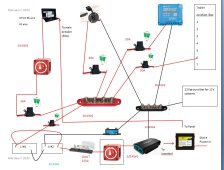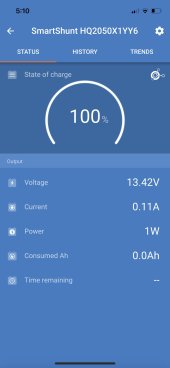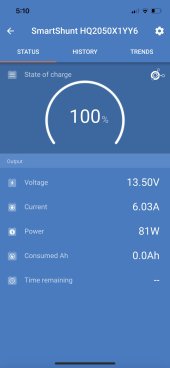Hi,
Quick smart shunt question.
I have my system on shore power. When I turn on devices, the smart shunt shows an increase in power and amps. Even though it's not running on battery only, is that how it works (reconize the loads)? Just making sure I have things wired ok. I am certain it's on shore power because my 120 outlets work.
Thank you
Quick smart shunt question.
I have my system on shore power. When I turn on devices, the smart shunt shows an increase in power and amps. Even though it's not running on battery only, is that how it works (reconize the loads)? Just making sure I have things wired ok. I am certain it's on shore power because my 120 outlets work.
Thank you





